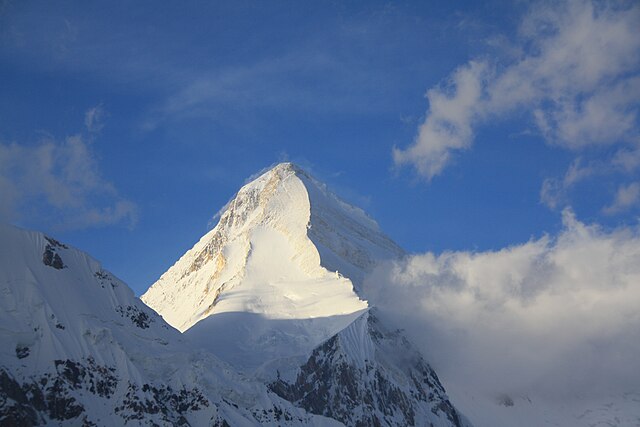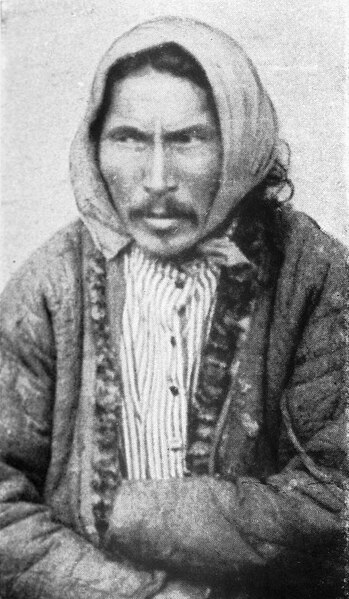Tengri is the all-encompassing God of Heaven in the traditional Turkic, Yeniseian, Mongolic, and various other nomadic Altaic religious beliefs. Tengri is not considered a deity in the usual sense, but a personification of the universe. However, some qualities associated with Tengri as the judge and source of life, and being eternal and supreme, led European and Muslim writers to identify Tengri as a deity of Turkic and Mongolic peoples. According to Mongolian belief, Tengri's will (jayayan) may break its own usual laws and intervene by sending a chosen person to earth.
Seal from Güyüg Khan's letter to Pope Innocent IV, 1246. The first four words, from top to bottom, left to right, read "möngke ṭngri-yin küčündür" – "Under the power of the eternal heaven".
The Khan Tengri pyramidal peak
The Yeniseian people refers either to the modern or ancient Siberian populations speaking Yeniseian languages. Despite evidence pointing to the historical presence of Yeniseian populations throughout Central Siberia and Northern Mongolia, only the Ket and Yugh people survive today. The modern Yeniseians live along the eastern middle stretch of the Yenisei River in Northern Siberia. According to the 2021 census, there were 1,088 Kets and 7 Yugs in Russia.
A Yenisei-Ostiak (Ket) man in Russia
Yeniseian Ket fisher folk in 1913. Photographer: Fridtjof Nansen




